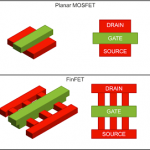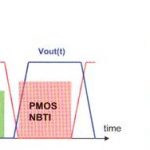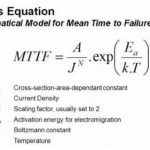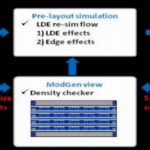You are currently viewing SemiWiki as a guest which gives you limited access to the site. To view blog comments and experience other SemiWiki features you must be a registered member. Registration is fast, simple, and absolutely free so please,
join our community today!
WP_Term Object
(
[term_id] => 89
[name] => FinFET
[slug] => finfet
[term_group] => 0
[term_taxonomy_id] => 89
[taxonomy] => category
[description] =>
[parent] => 0
[count] => 227
[filter] => raw
[cat_ID] => 89
[category_count] => 227
[category_description] =>
[cat_name] => FinFET
[category_nicename] => finfet
[category_parent] => 0
[is_post] =>
)
Analog and mixed signal design has received more than their fair share of attention since the mobile revolution and now that FinFETs are in production at the foundries I see that trend continuing. As a result this year there are some interesting things brewing in EDA, especially in the area of Custom Layout.
Innovation in Custom … Read More
It used to be that GPU chips moved to new process nodes pretty frequently, previously as often as annually. That is up until 2011. That was the year that 28nm GPU’s were unveiled. Since then there has been a long pause. Now in the wake of the 2016 CES both Nvidia, with its previously announced Pascal, and AMD, with the just announced Polaris,… Read More
As I mentioned in “EDA Dead Pool” acquisitions in our industry will continue at a rapid pace. The latest victim is 10 year old French company Infiniscale who was recently purchased by Silvaco. This was more of a “let’s put your product through our massive sales and support channel” kind of deal so it will be 1 + 1 = 3 accretive for sure.… Read More
One of the most common things I hear now is that the majority of the fabless semiconductor business will stay at 28nm due to the high cost of FinFETs. I wholeheartedly disagree, mainly because I have been hearing that for many years and it has yet to be proven true. The same was said about 40nm since 28nm HKMG was more expensive, which … Read More
At the recent TSMC OIP symposium, a collaborative presentation by Synopsys and Xilinx highlighted the importance of incorporating the local FinFET device self-heating temperature increase on the acceleration of device reliability mechanisms.… Read More
Why do I stalk the FPGA industry? Well, FPGAs are an important part of the fabless semiconductor ecosystem for two reasons: 1.) They enable very cost effective design starts which are the life’s blood of the semiconductor industry and 2.) FPGA prototyping allows designers to verify their designs before committing to silicon and… Read More
At TSMC’s OIP Symposium recently, Xilinx announced that they would not be building products at the 10nm node. I say “announced” since I was hearing it for the first time, but maybe I just missed it before. Xilinx would go straight from the 16FF+ arrays that they have announced but not started shipping, and to the… Read More
FinFET processes provide power, performance, and area benefits over planar technologies. Yet, a vexing problem aggravated by FinFET’s is the greater local device current density, which translates to an increased concern for signal and power rail metal electromigration reliability failures. There is a critical secondary… Read More
This is the 5[SUP]th[/SUP] TSMC Open Innovation Platform Ecosystem Forum and it is not to be missed. Please note that the location has moved from the San Jose Convention Center to the Santa Clara Convention Center which is literally right across the street from the new Levi’s Stadium. If you haven’t been to the new stadium you really… Read More
My first exposure to automating IC layout was back in the 1980’s at Intel where I coded a layout compiler to auto-generate about 6% of a graphics processor chip. The need to use automation for IC layout continues today, and with the advent of FinFET technology there are some new challenges like layout gradient effects that … Read More







The Quantum Threat: Why Industrial Control Systems Must Be Ready and How PQShield Is Leading the Defense